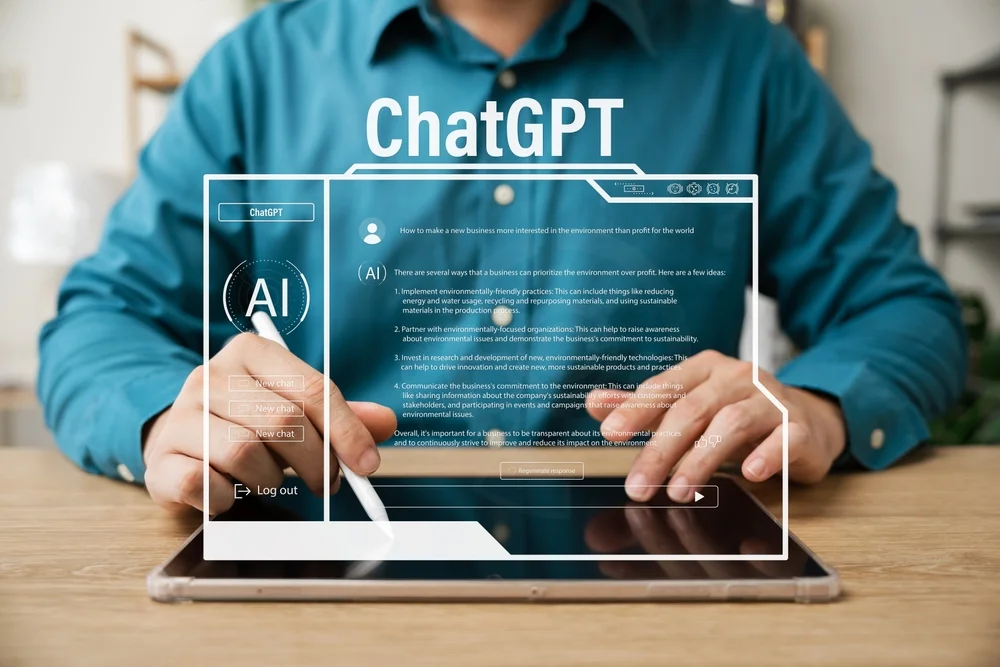Last Updated on January 2, 2026
Learning a new language can be really cool and rewarding, but figuring out where to start might be a bit tricky. Luckily, thanks to advanced technology, getting better at a language has become super easy. Imagine having a super-smart robot friend. Its name is ChatGPT. This robot from OpenAI can make learning a new language feel like a fun game. It helps you practice talking and listening, gives you tips on how to say things better, and teaches you new words. Here are seven awesome tips to learn a new language and become really good at it with ChatGPT:

1. Use ChatGPT to Practice Speaking and Writing in Your Target Language
Engaging in conversations with ChatGPT in the target language will challenge you to understand and respond to questions, practice your speaking skills, and build your confidence in communicating in the foreign language. ChatGPT’s natural language processing capabilities allow for engaging and dynamic conversations, giving you a unique opportunity to practice your listening and comprehension skills in real time.
You can also use the conversations to practice specific grammar structures, vocabulary, or pronunciation that you’ve been working on. You’ll get instant feedback on your language skills, helping you spot areas for improvement and continue building your proficiency in the foreign language. Conversation is an essential part of language learning, and by engaging in regular conversations with ChatGPT, you can develop your language skills more efficiently.
To have conversations with ChatGPT in a foreign language, you can use its translation capabilities by following these steps:
1) Choose the language you want to practice: Specify the target language in your prompt before starting.
2) Start a conversation: Ask ChatGPT a question or make a statement in the target language.
3) Respond to ChatGPT’s reply: Continue the conversation, practicing listening and comprehension in real time.
4) Practice speaking: Focus on pronunciation, grammar, and vocabulary usage.
5) Receive feedback: ChatGPT will give instant guidance that helps you keep improving.
2. Ask ChatGPT to Provide You With a Vocabulary List
Creating a list of commonly used words in a foreign language can be incredibly helpful, and ChatGPT can assist with this. To create your vocab list:
1) Ask ChatGPT for basic vocabulary in the target language.
2) Write down the words and add them to your personal list.
3) When you encounter new words in conversations, add those too.
4) Review your list regularly to strengthen your memory.
5) Use flashcards or similar tools to reinforce what you’ve learned.
Using ChatGPT conversations to see vocabulary in context will help you understand how the words naturally appear in real conversation, improving both comprehension and confidence.
3. Have ChatGPT Read Sentences and Translate Them to Help You Understand New Vocabulary
A helpful way to learn new vocabulary is to have ChatGPT read sentences and translate them for you. Provide a sentence in the target language, ask for a translation, then read the sentence out loud and repeat it several times. Focus on both pronunciation and meaning.
You can also ask ChatGPT to create example sentences with the new vocabulary. Seeing words in context improves understanding and makes them easier to remember. Writing your own sentences using the new vocabulary will reinforce your learning even more. Engaging with the language in different ways strengthens comprehension and retention.
4. Use ChatGPT’s Language Translation Features to Compare Your Writing to a Native Speaker’s
ChatGPT’s translation abilities can help you compare your writing to native-level phrasing. Write a sentence or paragraph in the target language, then ask ChatGPT to translate it into your native language. This helps you evaluate grammar, structure, and vocabulary usage.
You can also translate sentences written by native speakers and compare them with your own writing. While ChatGPT’s translations are strong but not perfect, they’re still a valuable reference that helps you notice mistakes and keep improving.
5. Ask ChatGPT to Generate Sentence Examples With Specific Vocabulary or Grammar
Here are some example structures you can request:
Present Tense
“The cat is sleeping on the couch.”
“I like to drink coffee in the morning.”
“She is going to the store to get bread.”
Simple Present
“I eat breakfast at 7 a.m. every day.”
“He never drinks soda.”
“They usually go to the park on Sundays.”
Simple Past
“I visited my grandparents last weekend.”
“She watched a movie yesterday evening.”
“We walked to the beach this morning.”
Simple Future
“I will visit my friends tomorrow.”
“She will study for her exam tomorrow night.”
“They will go on a trip next week.”
Comparatives and Superlatives
“My sister is taller than me.”
“The red car is faster than the blue car.”
“Mount Everest is the highest mountain in the world.”
Practicing with examples like these helps you understand grammar more naturally.
6. Get Creative and Use ChatGPT to Write Song Lyrics in Your Target Language
ChatGPT can make language learning fun through songwriting. Be sure to specify your target language, and pick a clear theme for your lyrics. Keep phrases simple and repeat important vocabulary to reinforce your learning.
Write freely and don’t worry about mistakes—songwriting can make language practice memorable and enjoyable.
7. Regularly Have Conversations With ChatGPT to Improve Your Listening and Comprehension Skills
ChatGPT is a helpful way to improve listening and comprehension through interactive conversation. You can practice exchanging topics, simulate real conversations, and learn from transcription-style outputs. As you continue chatting, you’ll gradually understand more complex conversations with less effort.
Conclusion
ChatGPT can support your language learning journey through conversation practice, vocabulary building, translation, writing comparison, sentence generation, and creative activities like songwriting. Using ChatGPT regularly strengthens your comprehension and boosts your confidence—all from home.
Looking for more tools to support your language journey? Check out our list of the Best Language Learning Apps + Software to find the right platforms that match your goals and learning style.

I’m an entrepreneur and digital marketing enthusiast who loves helping people grow—not just in affiliate marketing, but in all areas of online business. I enjoy showing others how to build a strong brand, create meaningful content, and use tools that make work easier. Over the years, I’ve learned what truly works in digital marketing, from creating websites that convert to building an engaged audience through email and social media. After more than ten years in the field, I’ve gathered plenty of lessons I enjoy sharing through my writing and talks. I use my own experiences to help others reach their goals and build something lasting. Besides running my business, I’m a fiction writer in the speculative genre, with dozens of short stories published in various magazines and anthologies. For eighteen years, I was a Top 10% Reviewer at Zoetrope, an online venue for creatives, where I helped members strengthen their writing. When I’m not working as a writer or marketer, you’ll probably find me cooking, reading, or watching a good baseball game. I live in New York City, where I was born and raised.
